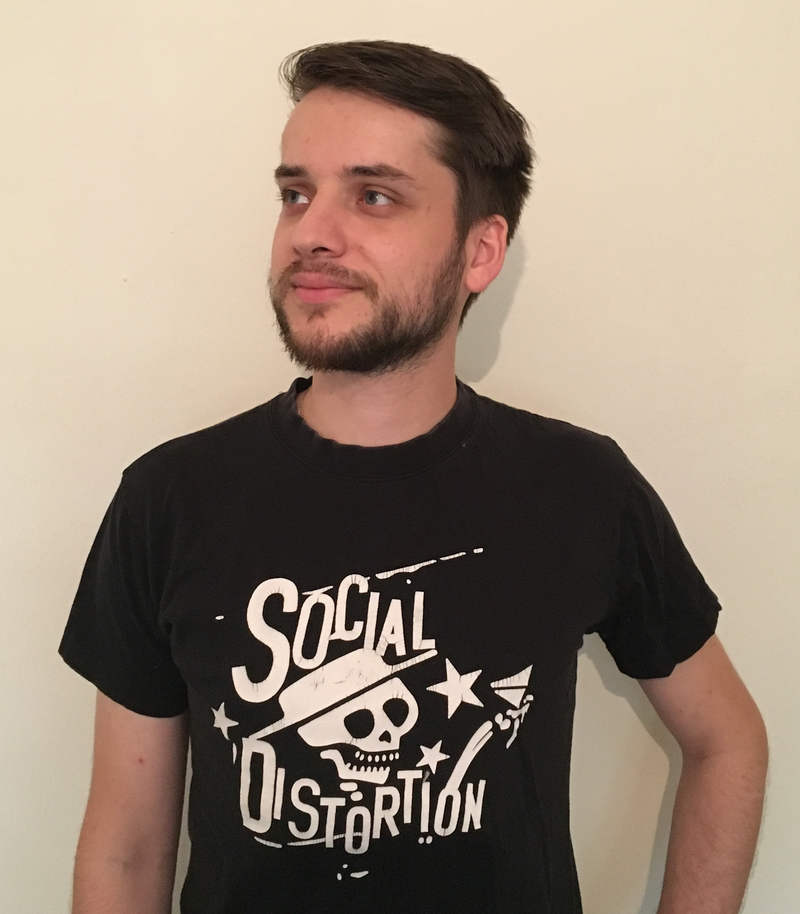I am currently post-doccing at the University of Edinburgh, where I focus on building a form-independent semantics for content words. Abstracting away from the surface form of words and focus on their meaning gets us closer to actual natural language understanding.
Previously, I have PhDed with focus on Compositional Distributional Semantics at the University of Sussex.

See a recent CV here (last updated 23rd July 2019) or feel free to contact me if you have any queries about my work or want to talk about NLP in general.
I am currently also co-organising the PyData Edinburgh Meetup. If you are interested in giving a main talk or a ligthning talk about something related to data and/or python, please get in touch.
About my Research
Language can be fairly weird at times as it lets us refer to the same thing by different words (e.g. buy, purchase, acquire are all - more or less - synonymous in meaning), and to different things with the same word (e.g. bank as in the financial institution vs. bank as the sloping land next to a river). During my PhD I've mostly focused on the latter, and indeed compositional distributional models are pretty good at making these distinctions (see e.g. this paper). In my post-doc I am now working on overcoming the issues of the former.
The short version
My research is focused on building better natural language understanding systems. My work is based on the combination of distributional semantics, distributional composition and logical semantics to understand and model causation and consequence of actions in text. I furthermore have a strong interest in leveraging unsupervised, semi-supervised and active learning techniques to improve and debug natural language understanding models.
The long version
My research is focused on building systems that understand natural language. I am particularly interested in modelling causation and consequence. Identifying a change of state for some entities and inferring their consequent state is a pretty tricky problem, that involves tense, aspect, mood, and all sorts of temporality in general.
Modelling these fine-grained semantic properties at the word, clause and sentence level is very difficult and pretty much all current models fail to achieve reasonable performance on even a simple dataset (see our recent paper here).
For example, it sounds reasonable at first to assume that visits entails be at/in, so whenever we encounter the predicate visit we infer that whoever is doing the visiting must also be at that place.
However, when temporality comes into play, things get a bit more complicated, as Elizabeth will arrive at Pemberley does not entail that she is at Pemberley now.
Things are also uncertain when we read that Elizabeth had arrived at Pemberley. Its unclear whether she's still there, so all we can infer is that Elizabeth WAS at Pemberley at some point in the past as we could easily add but she left 3 days later.
Only when we read that Elizabeth has arrived at Pemberley can we infer that Elizabeth IS at Pemberley at the time of utterance. Thus the consequent state of having arrived at a location is being at that location (now).
And thats just the beginning! Another class of difficult unidirectional inferences concern the Aktionsart of a verb. Often entailment between verbs follows paraphrastic patterns, such as buying a thing entails purchasing that thing or acquiring that thing, and vice versa in all combinations. All of these verbs, buy, purchase and acquire, are actions, but when we throw in a state, the bidirectionality of the entailment relations breaks down.
For example, while Mr Bingley buys Netherfield entails he purchases Netherfield and vice versa, the entailment between Mr Bingley buys Netherfield and Mr Bingley owns Netherfield is one way only, i.e. Mr Bingley owns Netherfield does NOT entail he bought it, as he could have also built it himself, or inhereted it. Ownership is another example of a consequence or consequent state of an event - the purchase of Netherfield.
Being able to model temporality is useful for tracking the state of the world (i.e. building and maintaining the state of a knowledge base), as it enables the correct inference of facts about ownership or by following the whereabouts of certain entities in text.
For example, temporality is important to draw the correct inferences from the two following (semi-fictional) news headlines, Google has acquired YouTube and Amazon will buy Netflix.
Inferring that in the former case, the acquisition of YouTube is completed, and the consequences of the acquisition (ownership of YouTube by Google), hold at the time of utterance, it is possible to answer questions such as Who owns YouTube?. In the latter case, we would be able to infer that Amazon does not (yet) own Netflix, hence our model would be able to correctly answer the question Does Amazon own Netflix? with no.
Another interesting problem is tracking where a particular person currently is, for example given the following (fictional) snippet of news text:
The first minister Nicola Sturgeon has arrived in Edinburgh late last night. However, she will travel onwards to Brussels early on Tuesday in order to meet the President of the European Commission Ursula von der Leyen, followed by a brief visit to Berlin to meet with chancellor Angela Merkel on Wednesday.
Modelling temporality is essential for answering the question Where is Nicola Sturgeon now? with Edinburgh.